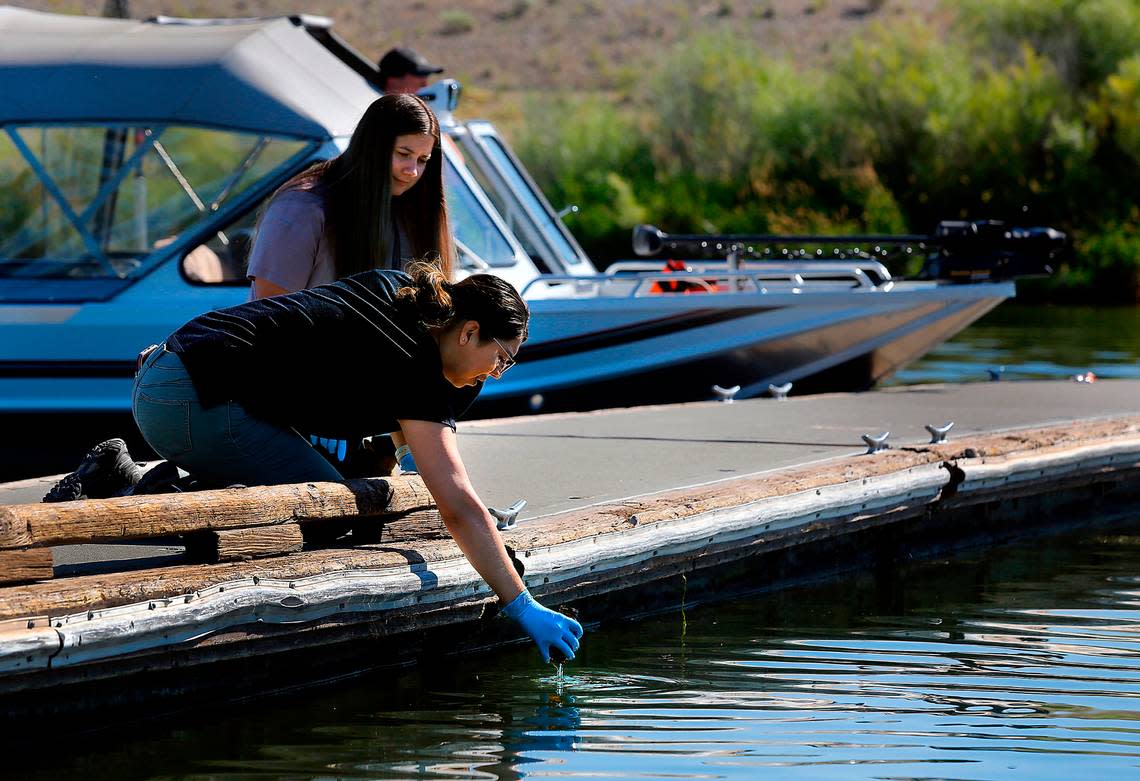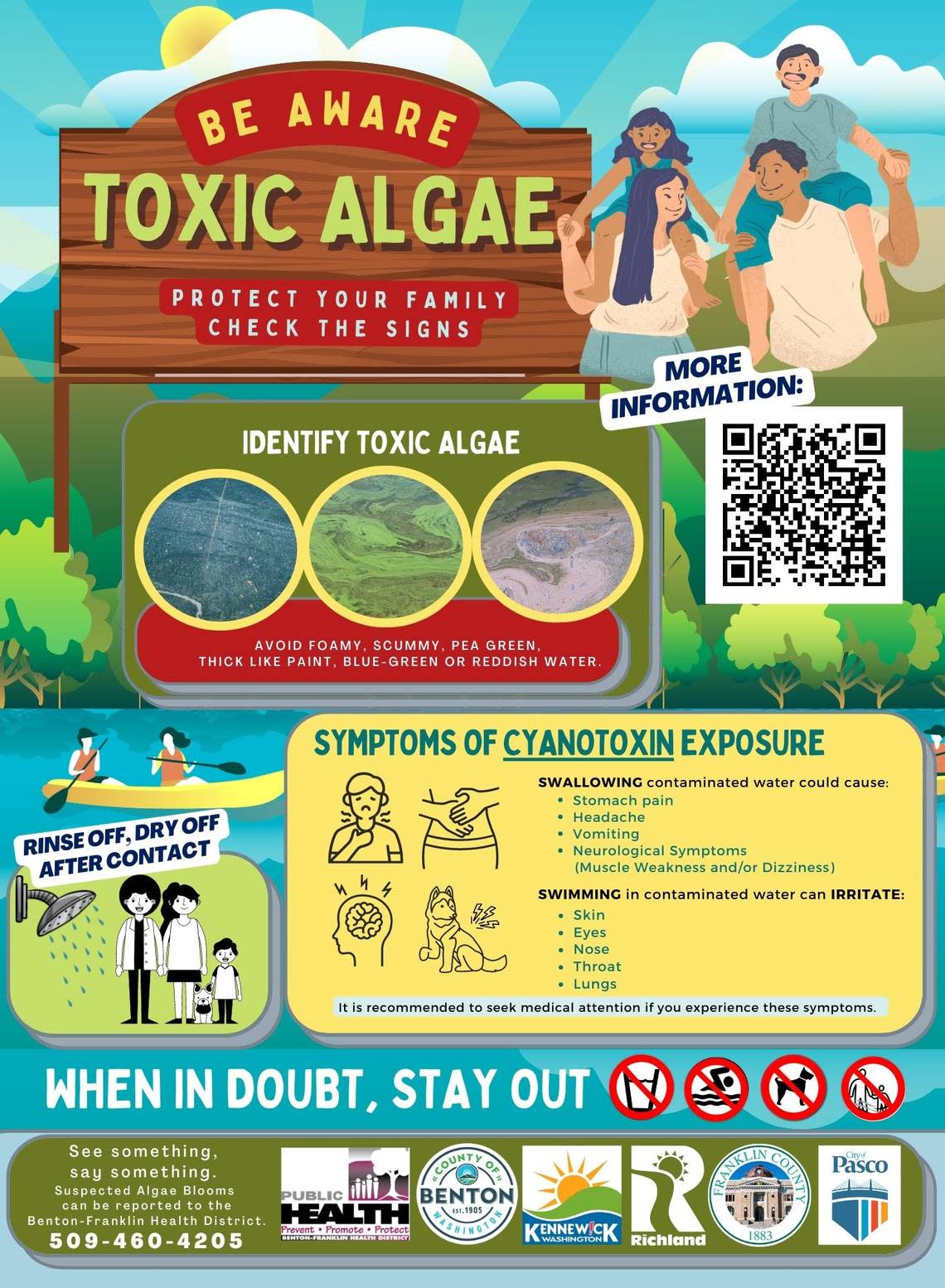Toxic algae found at Columbia River swimming beach in Tri-Cities. Stay out of the water
Toxic algae is back in the Columbia River on the Richland shoreline.
The Benton Franklin Health District said Friday afternoon that test results for water at the Howard Amon swimming beach showed elevated levels of a neurotoxin, which is especially dangerous for small children and animals.
The neurotoxin is released into the water by bacteria in the scum on the river water.
People and their dogs should stay out of the water at the swimming beach until tests show the toxin levels have dropped, the health district said.
Water will be sampled at the swimming beach weekly, with health district officials looking for two weeks with test results showing the water is safe before they recommend people again use the swim beach.
Warning signs have been posted.
Toxic algae blooms also have been found this month at Sagemoor Pond north of Pasco in rural Franklin County and at the McNary Slough near Burbank in Walla Walla County, according to the Washington State Toxic Algae monitoring program.
Exposure to the toxin
People and animals are exposed to the toxin by ingesting contaminated water, including drinking untreated water or inhaling spray from the river. Dogs can ingest the toxin by licking their fur.
Symptoms can appear withing 15 to 20 minutes, depending on the size of the person or animal and the amount of toxins consumed.
Exposure in animals may result in weakness, staggering, difficulty breathing, convulsions and death.
In people signs may include numbness of the lips, tingling in fingers and toes, and dizziness. They should seek medical attention, according to the health district.
It is far less common for people than dogs to die from the toxin.
There was a case of a teen who died of poisoning two days after swimming in and swallowing contaminated water in a golf course pond in Wisconsin, as reported in the journal “Current Problems in Pediatric and Adolescent Health Care.”
People catching fish in areas with a major toxic algae bloom, should be aware that the neurotoxin may accumulate in the liver, kidneys and other organs of fish.
They should remove the internal organs, which may contain more of the neurotoxin, and consider not eating the fish.

Toxin killed Tri-Cities dogs
Public health officials were surprised when several dogs that had played in the Columbia River in Richland and just upstream two summers ago died, and sampling of river water showed cyanobacteria.
It prompted a new joint program among Richland, Kennewick, Pasco and West Richland, all of which use some drinking water from the Columbia River, to test river water.
Samples are collected at the river water intake for city water treatment plants and at seven river recreation sites, from Ringold in Franklin County to as far south as Two Rivers Park in Finley.
Public health officials had never seen blue green algae toxins in the Columbia River in the Tri-Cities before two summers ago.
It’s not technically algae that causes a blue or green scum on slow-moving water, but a large amount of bacteria, which produce a toxin.
Many summers bacteria has been found by the Benton Franklin Health District during hot weather at Scootney Reservoir in Franklin County. The type of bacteria there produce the microcystins toxin, which harms the liver.
But the toxin found in the Columbia River, is a type of cyanotoxin — anatoxin-a — that harms the nervous system.

Avoiding contaminated water
If you are looking for a place to play in the water, particularly in the summer or fall when toxic algae is most likely to be present, the health district recommends:
• Look for warning signs and for signs of toxic algae blooms in the water. It make look like green, blue, brown or reddish green paint floating on the water. When in doubt, stay out.
• After swimming or playing in the water, shower with soap and water.
• Report suspected toxic algae blooms online at the Washington State toxic algae tracking site at nwtoxicalgae.org or to the Benton Franklin Health District.
